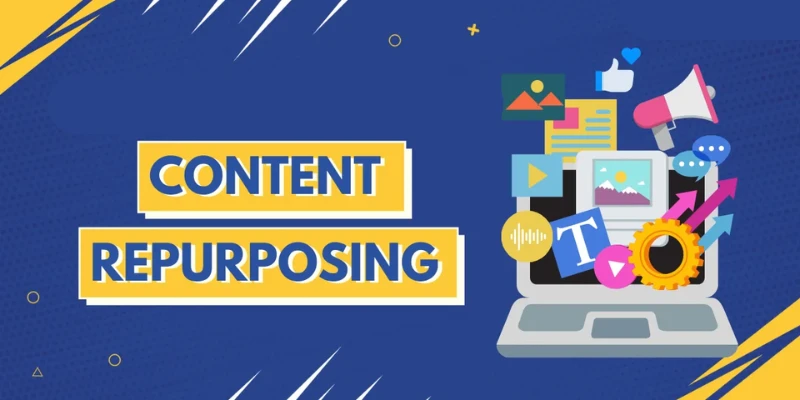In the fast-moving digital world, producing new and engaging content regularly can be time-consuming. One of the smartest strategies to stay consistent without burning out is repurposing old content. It allows you to give your previous work new life, attract fresh audiences, and improve overall content performance. Repurposing not only saves effort but also strengthens your brand visibility and SEO presence across multiple platforms. For those looking to master such creative strategies, joining the Best Training Institute in Chennai can provide valuable insights into content optimization and marketing techniques.
Why Repurposing Content Matters
Every article, blog post, or video you create carries immense potential. However, after its initial reach, even the best content tends to lose traction over time. Repurposing allows you to extend its lifespan by updating, redesigning, or reformatting it to match current trends and audience needs.
Search engines prioritize updated and relevant content. By refreshing your older pieces, you not only improve your website’s SEO rankings but also ensure that new audiences discover your best-performing work. Moreover, repurposing allows you to adapt the same idea for multiple content types blogs, videos, infographics, or podcasts, reaching audiences with different consumption preferences.
Identifying the Right Content to Repurpose
Not all content needs to be repurposed. Start by reviewing your website analytics and identifying top-performing posts that once attracted traffic or engagement but have since slowed down. Evergreen content topics that remain relevant for a long time are perfect candidates for repurposing.
Look for pieces that answer recurring questions, share tutorials, or offer timeless insights. Updating them with current data, visuals, or examples can instantly make them relevant again.
Effective Ways to Repurpose Old Content
1. Refresh and Expand Blog Posts
Add new insights, updated statistics, and improved formatting to give your old blogs a fresh feel. Expand on sections that previously performed well or add FAQs to boost reader engagement.
2. Transform Blogs into Videos or Podcasts
Repurposing written content into videos or podcasts helps you connect with audiences who prefer visual or auditory learning. Short clips summarizing key points can perform well on YouTube, Instagram, or LinkedIn.
3. Design Infographics and Visual Posts
Turn your data-heavy or informative posts into visually appealing infographics. This makes the information easier to consume and shareable across platforms like Pinterest or Twitter.
4. Create Social Media Micro-Content
Extract short quotes, statistics, or insights from your blogs to use as standalone social media posts. These snippets can lead users back to your full article, increasing website traffic and visibility.
5. Compile an eBook or Mini Guide
If you have multiple blogs on a similar topic, combine them into a downloadable guide or eBook. This serves as an excellent lead-generation tool and establishes your authority in the niche.
6. Develop Webinars or Online Workshops
Transform informative blogs into interactive webinars or workshops. This method gives you better insights into your content and facilitates direct audience engagement.
SEO and Marketing Advantages of Repurposing
Repurposing boosts SEO by updating your content with fresh keywords, links, and meta descriptions. Content that is valuable and up to date is preferred by search engines.
Additionally, promoting repurposed versions across platforms like LinkedIn, Facebook, or YouTube expands your audience reach and generates more backlinks. With consistent updates and engagement, your older posts can continue driving traffic for years.
Professionals seeking to enhance their writing and SEO strategies can benefit from joining a Content Writing Training in Chennai, where they can learn practical skills to create and repurpose high-performing content effectively.
Expanding Reach Across Platforms
Different platforms cater to different audiences, and repurposing helps you tap into all of them. A blog post can be turned into a LinkedIn article, a podcast episode, or a short Instagram reel. Each format engages unique users and increases overall visibility.
Ensure that every format maintains your brand tone while being tailored to platform-specific styles. This cohesive yet diverse content strategy enhances trust and consistency in your brand image.
Maintaining Quality During Repurposing
While repurposing saves time, quality must always remain a top priority. Every piece should add new value through updated facts, design improvements, or new insights. Avoid direct duplication; instead, enhance it for better user experience.
Regularly revisiting your content library ensures that all your materials remain aligned with your brand’s evolving goals and market trends.
Using Analytics to Refine Your Strategy
Your analytics tools provide valuable data about how repurposed content performs. Monitor engagement rates, clicks, and shares to identify what works best. Use this information to guide future repurposing efforts, focusing on formats that deliver the highest ROI.
Listening to audience feedback also helps you tailor your content better making it more interactive and relevant over time.
Repurposing old content is a sustainable and effective strategy for maximizing your creative output. To increase SEO, draw in new readers, and strengthen brand authority, you may update already-existing content rather of continuously beginning from scratch.
With thoughtful planning and a structured approach, repurposed content can deliver long-term results while keeping your digital presence strong and engaging.


